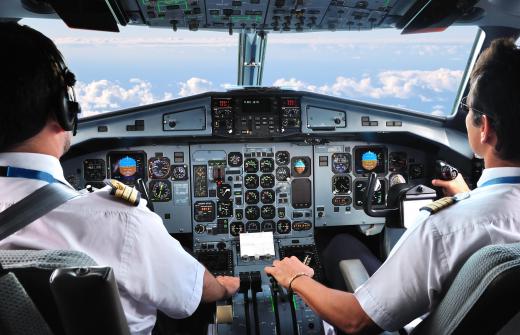What is Human Factors Engineering?
Human factors engineering is a generalist term used to describe a number of disciplines that study how users appreciate and interact with products. This may include product design and branding, product psychology, user-interface design, and education factoring. Human factors engineering is referred to in much of the world as ergonomics, and may occasionally be shortened to simply human factors or human engineering.
Human factors draws on experts from many different disciplines to paint a clearer picture of how a human will interact with a product. Of particular use in human factors are engineers, designers, psychologists, and computer programmers. In some situations, other experts may be needed, depending on the specific product -- educational products may need the insights of an education professional, while a speech program may use a linguist to determine how people are most likely to interact with the software.

The essential goal is to analyze how people are likely to use a product, and to design the product in such a way that it will feel most natural to them. This concept has its origins in World War II, when it was used to address airplane design so that new airplanes could be built to allow the pilot to easily assimilate the multitude of information he received. By the 1950s, the concept had become a full-fledged discipline, giving birth to a number of niche fields such as biomechanics and engineering psychology. The Human Factors Journal was founded at this time in the United States, ushering in a new age of human-machine interaction. Early research dealt primarily with industrial and defense machines and the ways in which they interacted with humans, though some early consumer research was also conducted.
Beginning in the early 1980s, the concept made the full leap to the consumer realm, particularly with the advent of personal computers. Software development required coming up with strong user interfaces that were natural for people to use, and human factors engineering played a key part in defining the look and feel of the computers we use today. The engineering of workplace furniture also started relying heavily on the human element, particularly the form referred to in the United States as ergonomics or biomechanics. Chairs were designed with physical health in mind, and desks were created to offer easy access and mobility in a variety of situations.
At its heart, this type of engineering seeks simply to reduce the feeling of tension that arises in many people when they need to interact with a machine. Its ultimate goal is a completely natural feeling when using any product, either tangible or virtual. The future of this type of engineering is very exciting, with revolutions in voice interaction, anthropomorphic robotics, and systems that learn and adapt to frequent tasks all just over the horizon.
AS FEATURED ON:
AS FEATURED ON:











Discussion Comments
@winslo2004 - You give a great example. The military and NASA so often drive engineering.
Looking at the stick on a modern bomber, for example, you see probably a dozen buttons in that small space. The pilot has to be able to use them all without looking at 1000 miles an hour. It takes an amazing amount of engineering to make them all usable and instinctive.
I notice it most in computers. When I was a kid they didn't really do much and you had to know a lot of obscure commands and techniques to use them. I had no interest in using a computer at that time because it looked like a lot of work for little reward.
It wasn't until Windows came along and made everything "point and click" that I really started getting into them. By focusing on making it easier for the common person to understand how it worked, millions of people got into computers.
It really makes sense that this field of study has only been around since World War II, since that is when machinery started to get a lot more complicated. As an example, take the human factors involved in something like aviation.
An aircraft in the 1920s was basically a big kite with a stick, some rudder pedals, and a lever or two. World War II military aircraft were hugely more complicated, with all kinds of gauges, weapons, navigation devices, and life support systems. Using it all under the stress of combat required finding ways to make it more instinctive and user friends.
Post your comments